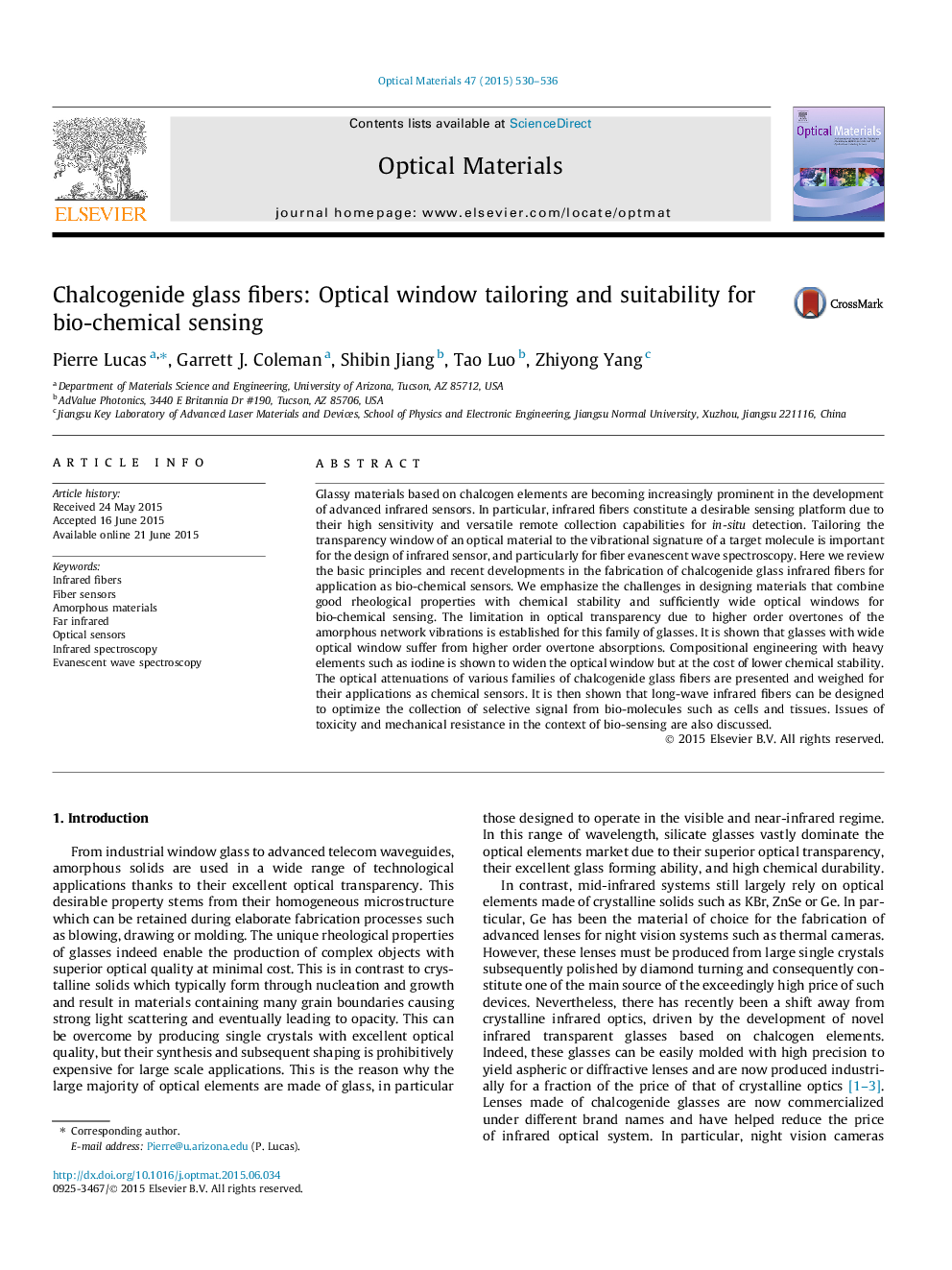| Article ID | Journal | Published Year | Pages | File Type |
|---|---|---|---|---|
| 1493751 | Optical Materials | 2015 | 7 Pages |
•Basic principles in the fabrication of chalcogenide glass infrared fibers are reviewed.•The contribution of higher overtones to the optical window is established.•The suitability of chalcogenide glasses for bio-sensing is discussed.
Glassy materials based on chalcogen elements are becoming increasingly prominent in the development of advanced infrared sensors. In particular, infrared fibers constitute a desirable sensing platform due to their high sensitivity and versatile remote collection capabilities for in-situ detection. Tailoring the transparency window of an optical material to the vibrational signature of a target molecule is important for the design of infrared sensor, and particularly for fiber evanescent wave spectroscopy. Here we review the basic principles and recent developments in the fabrication of chalcogenide glass infrared fibers for application as bio-chemical sensors. We emphasize the challenges in designing materials that combine good rheological properties with chemical stability and sufficiently wide optical windows for bio-chemical sensing. The limitation in optical transparency due to higher order overtones of the amorphous network vibrations is established for this family of glasses. It is shown that glasses with wide optical window suffer from higher order overtone absorptions. Compositional engineering with heavy elements such as iodine is shown to widen the optical window but at the cost of lower chemical stability. The optical attenuations of various families of chalcogenide glass fibers are presented and weighed for their applications as chemical sensors. It is then shown that long-wave infrared fibers can be designed to optimize the collection of selective signal from bio-molecules such as cells and tissues. Issues of toxicity and mechanical resistance in the context of bio-sensing are also discussed.
